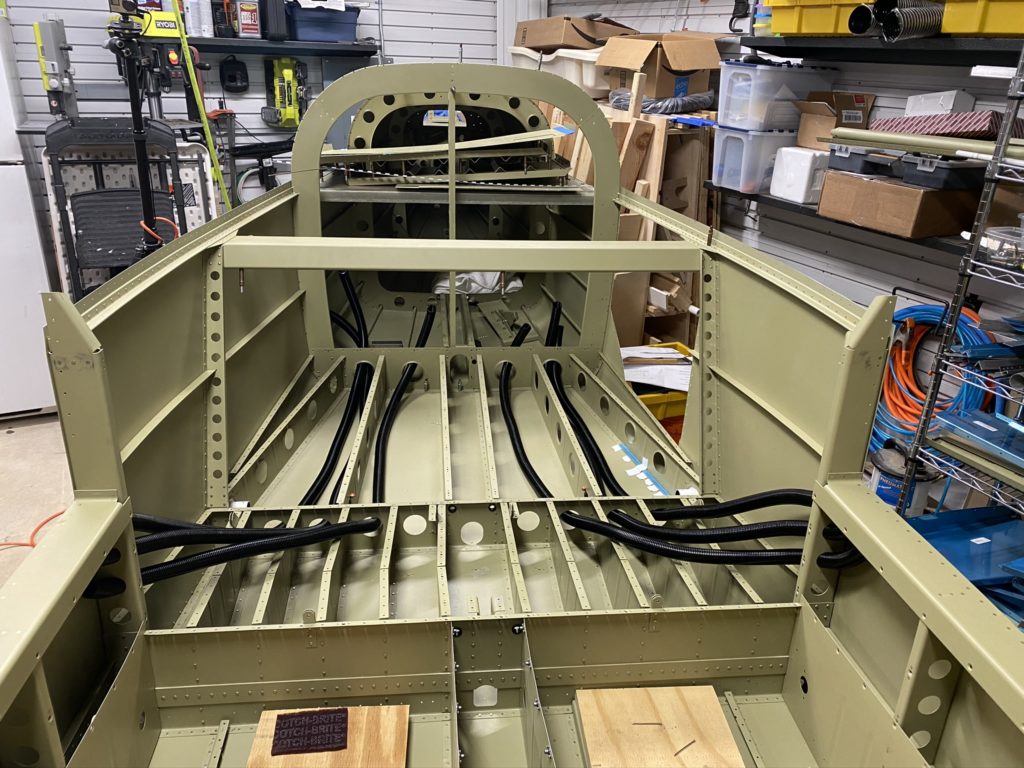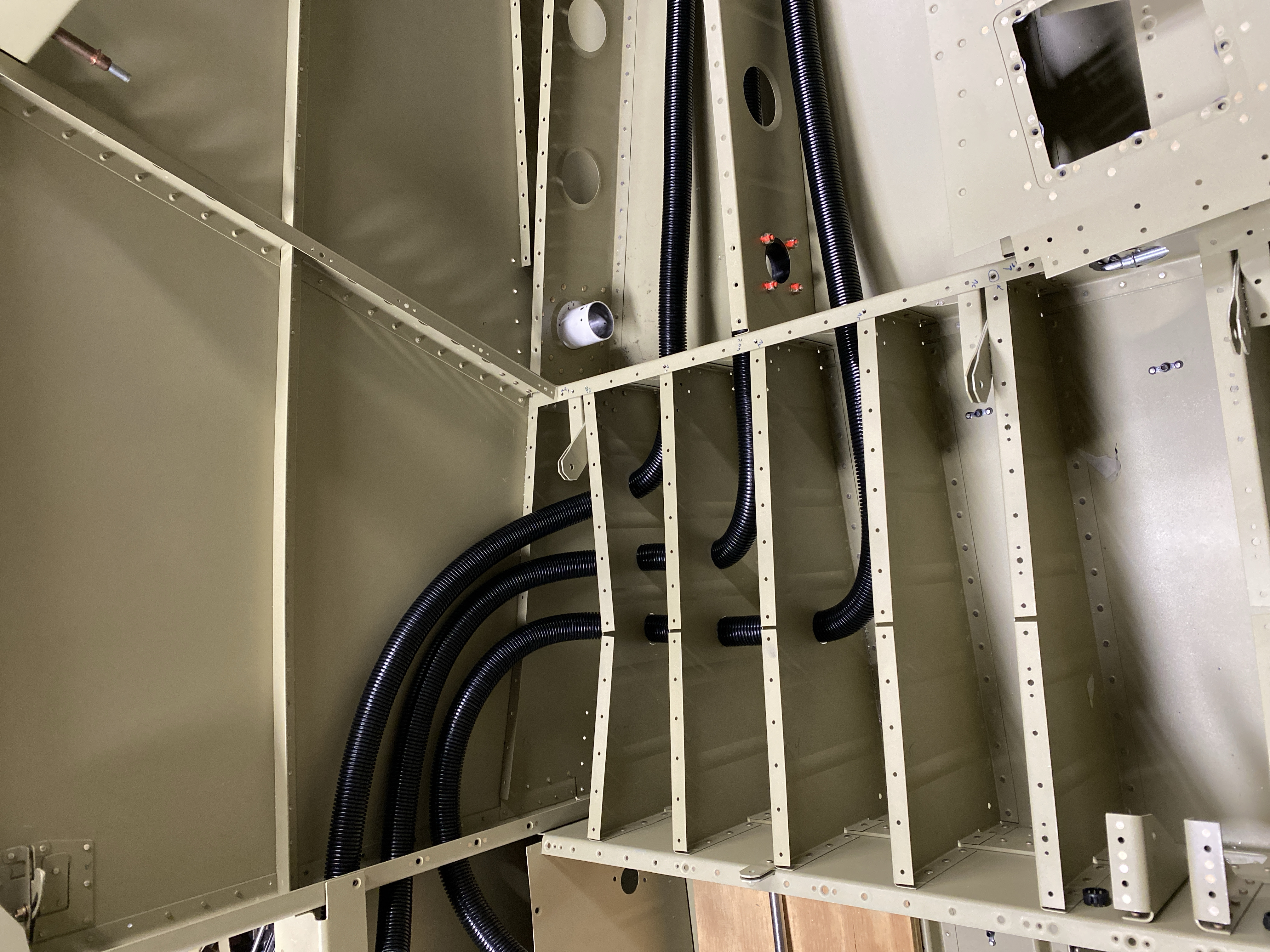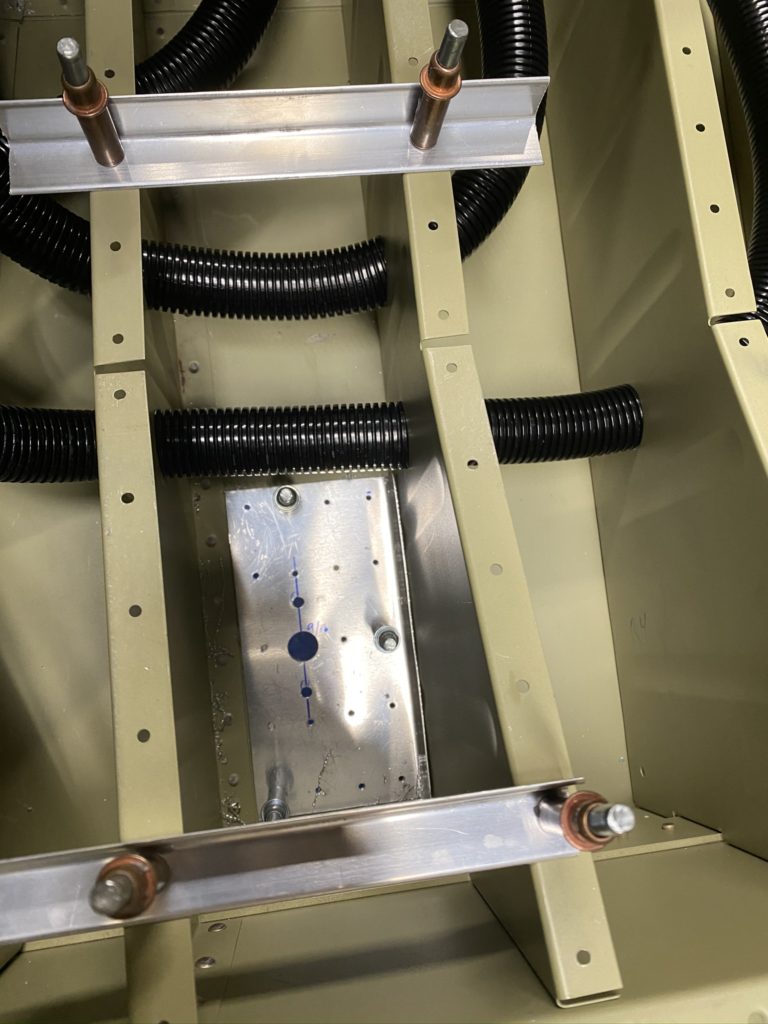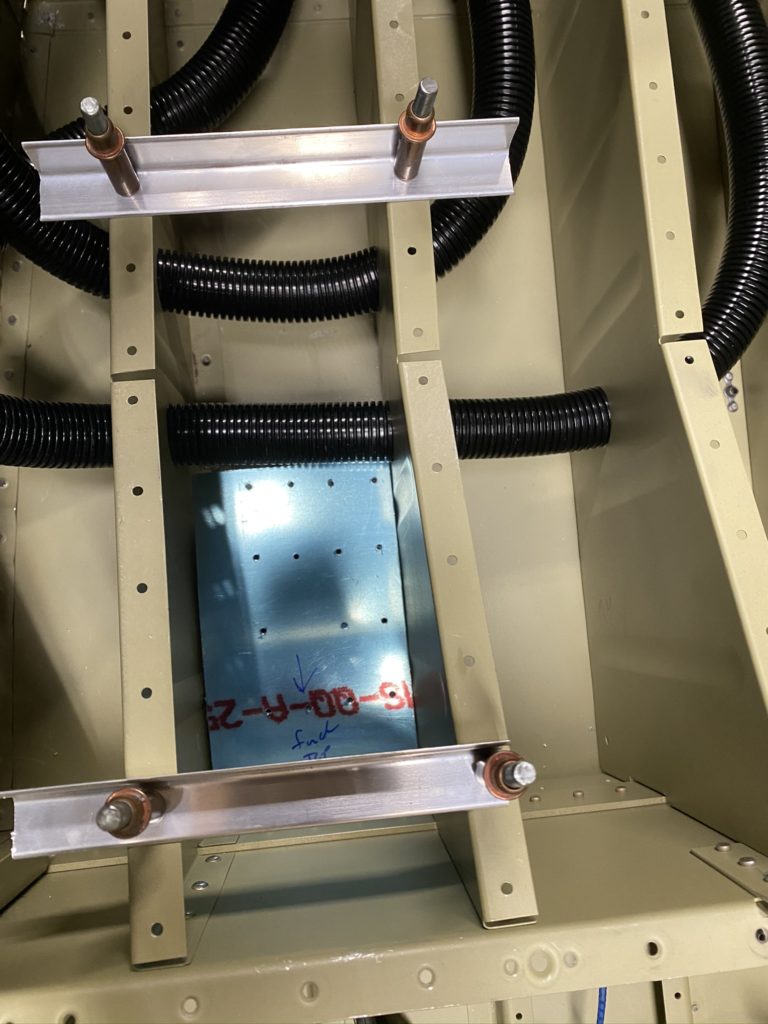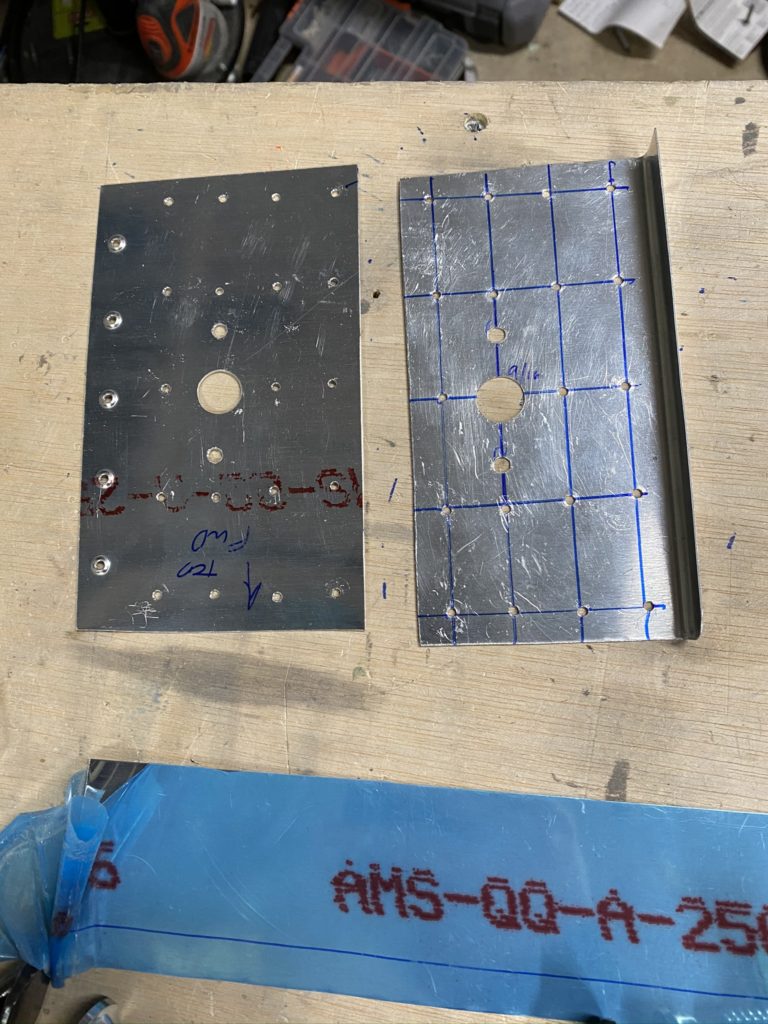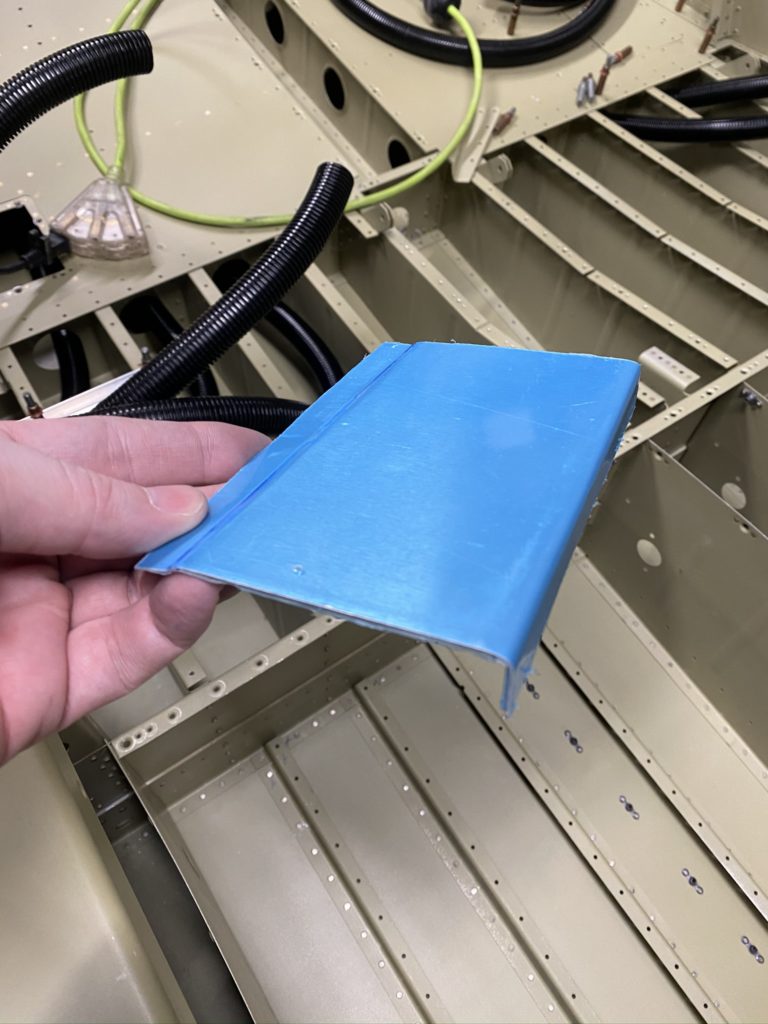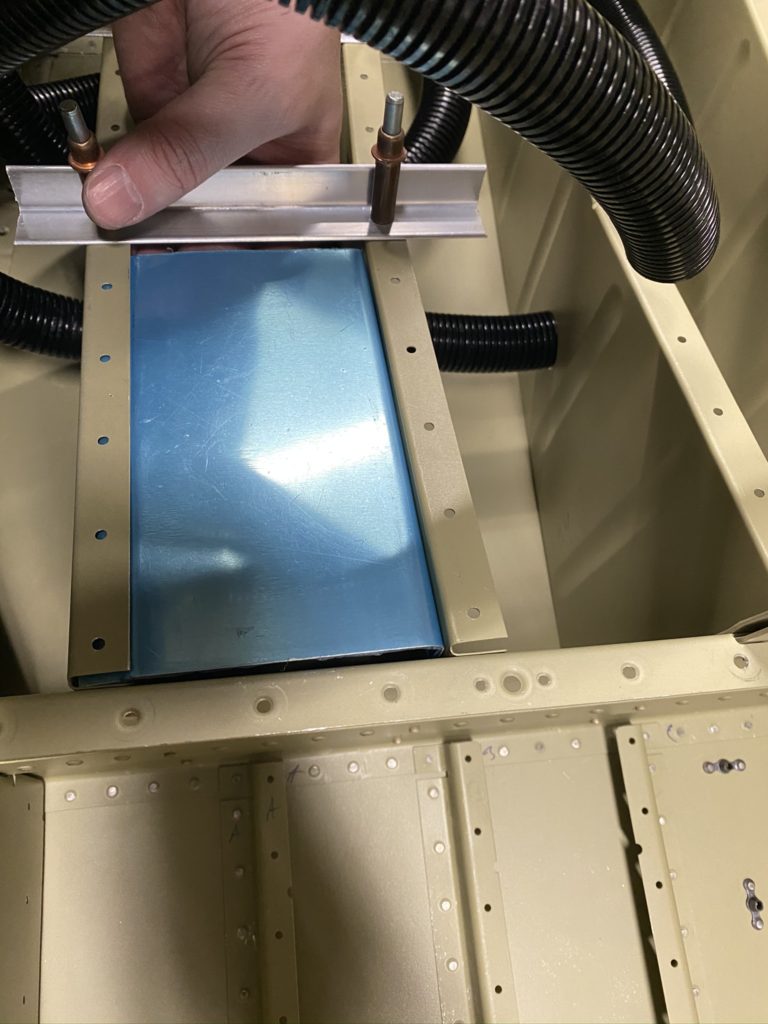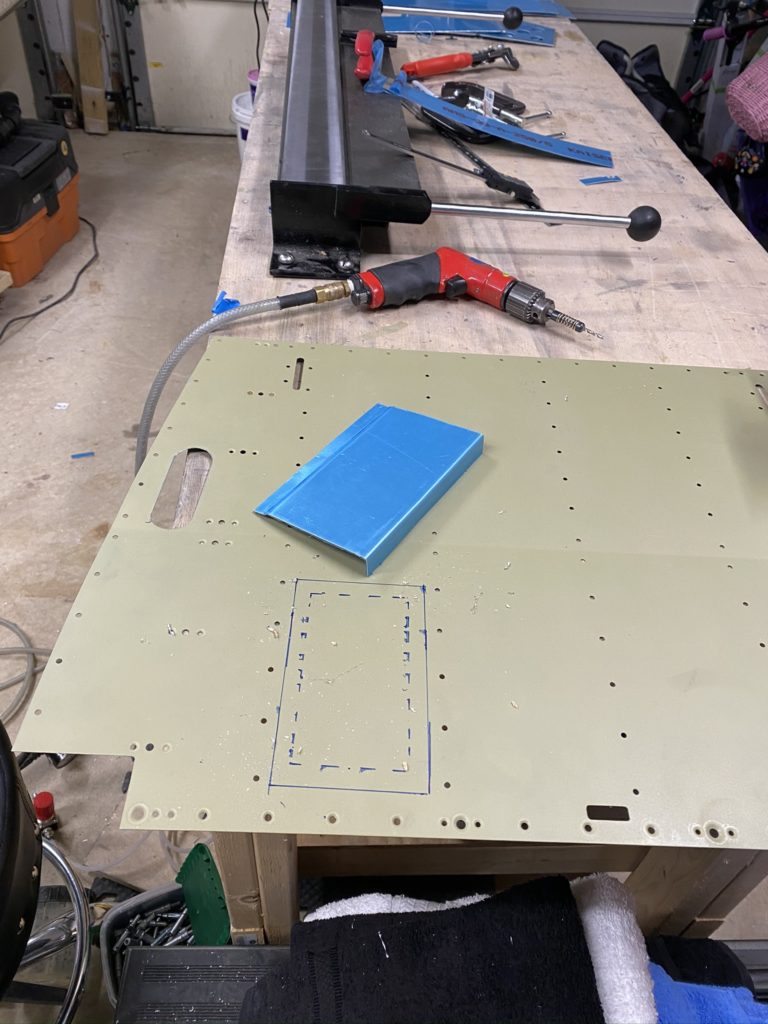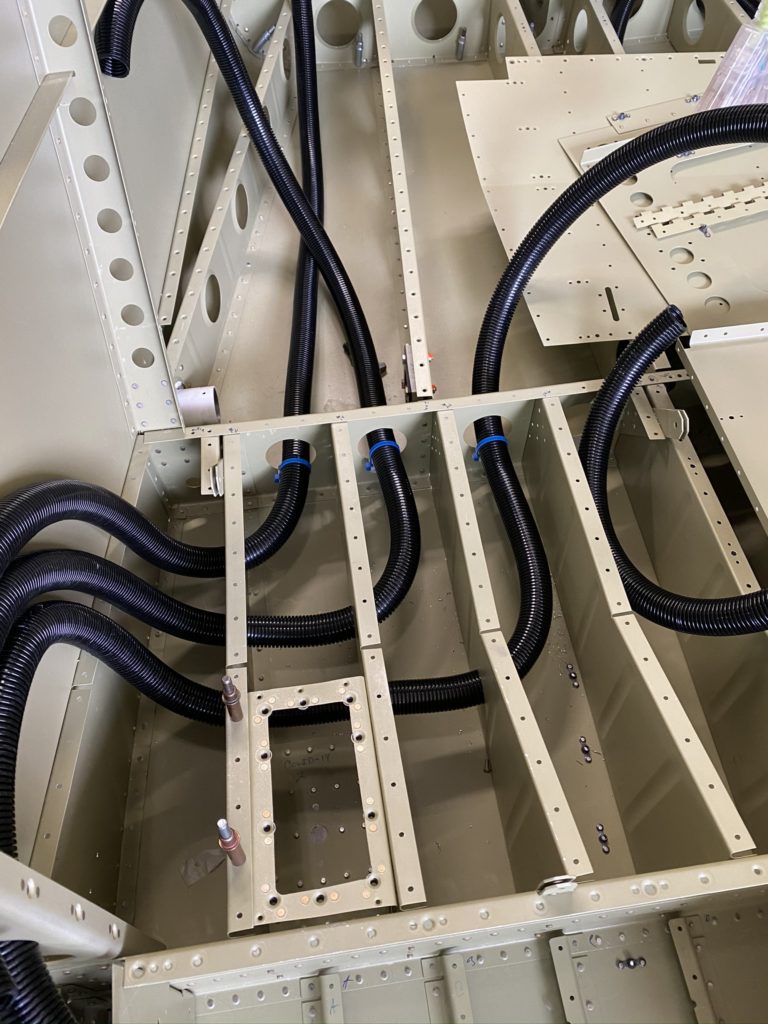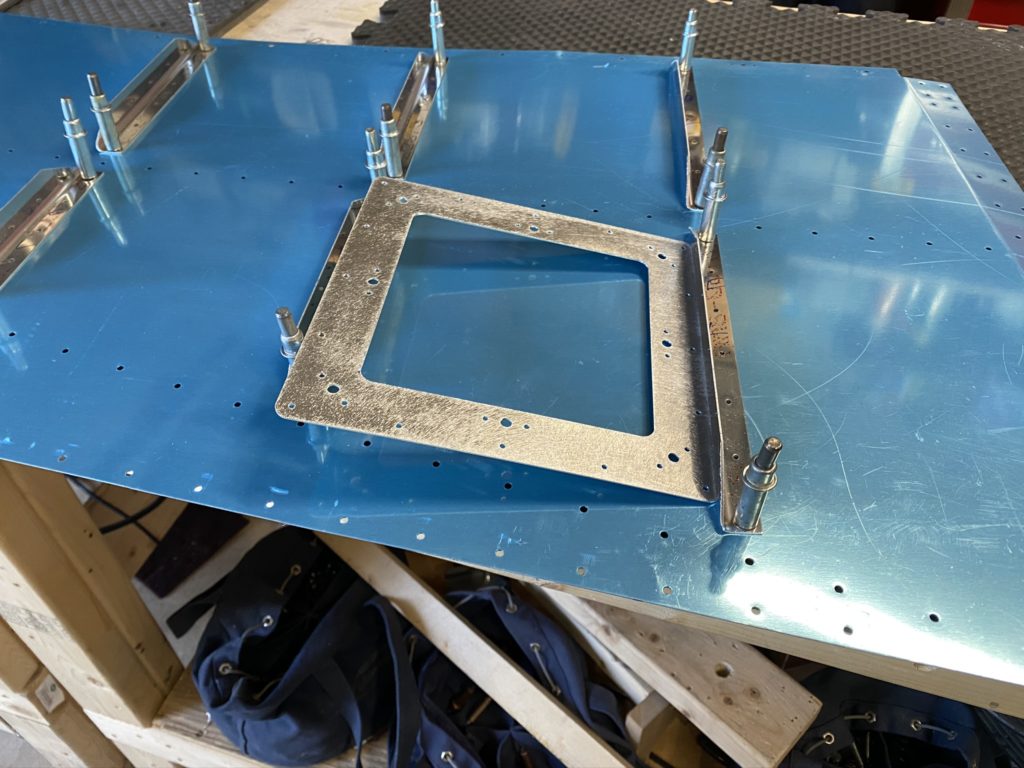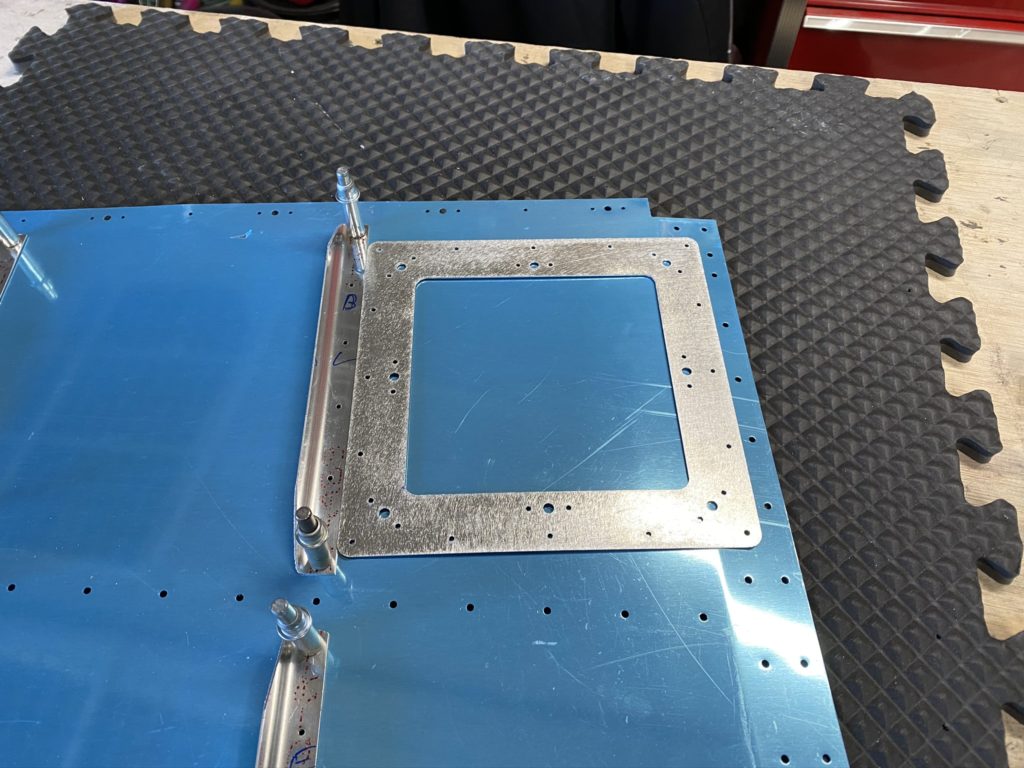About halfway through working on the baggage floors and rear seats, I realized that I probably should install the rear floor pans before I even put the rear seat panels on. Of course I realized this AFTER I created and installed my rear seat access panel and had the conduit run through the left seat floor cover.
After looking at my fuselage and the plans, I realized I made a minor mistake earlier in the build. For whatever reason, when I installed the rivets on the tunnel for the front seat brackets, I installed them with the shop heads in the rear foot well. This isn’t a huge deal, but it did make life a little more difficult to install the rear floor. Between that and the concern I would bend something trying to remove the floor pans, I elected to only install the floor pan once.
Instead of match drilling, I just reamed all of the holes on the floor pan, deburred and then primed both floors. I did slightly test fit the floor when it matches against the forward seat supports and needed to file a few places so everything with fit perfectly. I then reamed all of the matching holes on the stiffeners. Once done, I dimpled the floor and installed the nutplates. On the ribs already installed in the fuselage, I had to use my vice grip dimple set on all the holes. Not sure how else you can do this as none of my yokes would come close to fitting in that tight space.
To install the floors, I really had to push the tunnel panels with some force to get the floor past the shop head of the rivets. Then, with a little push on the aft end of the floors, it dropped into it’s final location and fit perfectly. I think I made the correct choice as getting it out once it’s in looked like it would be a royal pain.
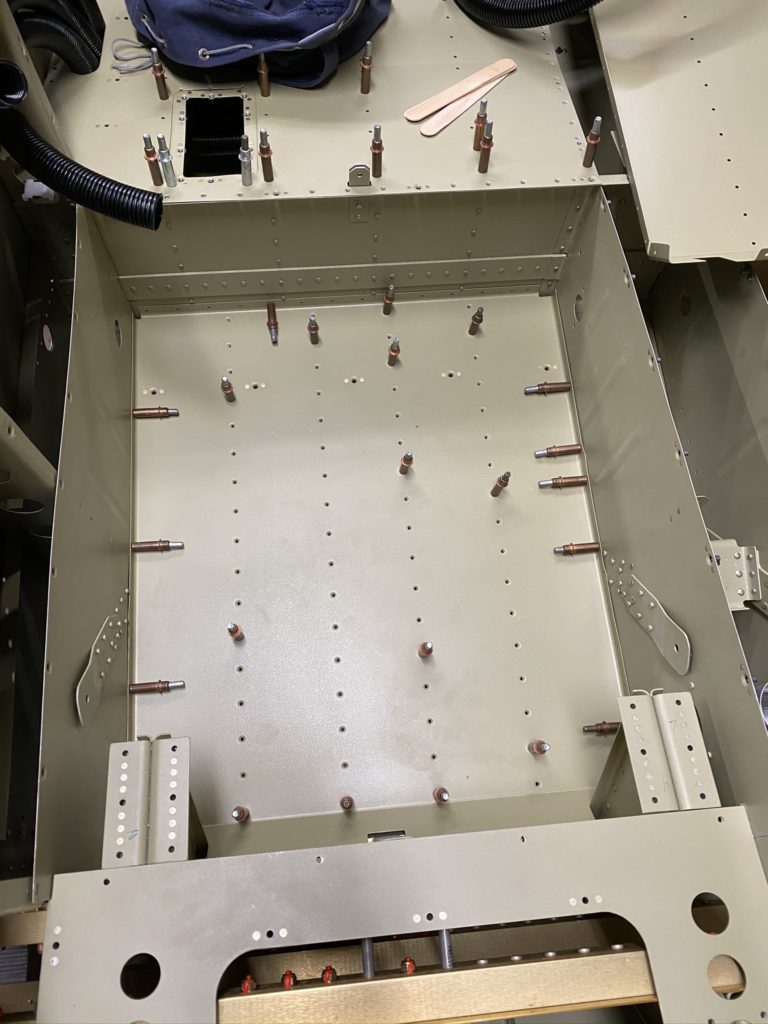
With the floor in place, I clecoed to get the ribs to line up, then began to install all the countersunk blind rivets to attach the floor to the ribs. With the CS blind rivets in, I then drill the fwd holes into the spar web, give a light deburr and install the LP4-4 rivets.
With the blind rivets all installed, it’s on to installing the AN470 rivets to the tunnel, fuse side, and rear seat spar. This is where not having the seat pan installed would make life a little easier. Installing the rivets in the tunnel and rear seats isn’t too bad. Getting to the side walls was a little more tricky. Also the plans don’t call out you need different size rivets for the places where the seat belt tie-down are in the tunnel. I also noticed one location on the rear seat is REALLY close to one of the ribs and almost impossible to set correctly. Not sure if I installed a rib backwards or something, or if it’s just a funky location. I got it set, but it’s not pretty.
Need to finish up the baggage area before I go further with the access covers. I already know I need to make modifications to the tunnel cover for the Control Approach pedals and the center console fuel selector.
